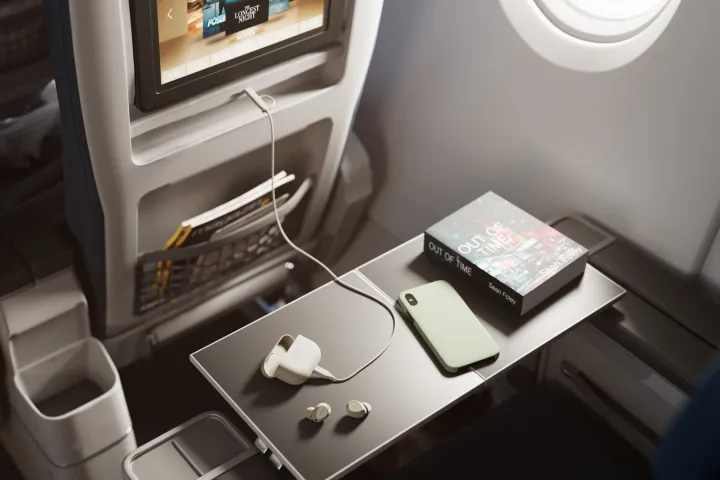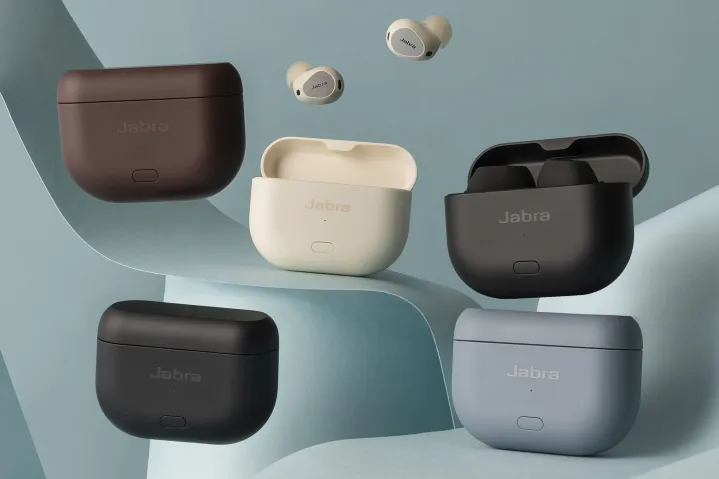
It’s only been one year since they were released, but Jabra has already updated its Elite 10 and Elite 8 Active wireless earbuds with a new charging case that can double as a wireless transmitter. Simply plug the case into an analog audio source, like an aircraft’s entertainment system or a workout machine, using the included cable, and the case will send that audio to the earbuds using the latest Bluetooth LE Audio standard.

Jabra says it has also made meaningful improvements to spatial audio quality, call quality, and noise canceling. Unfortunately, these new features come with higher prices. Both the Elite 10 Gen 2 and Elite 8 Active Gen 2 sell for $30 more than their predecessors: $279 and $229 respectively, versus $249 and $199 for the Gen 1 products. They’ll be available for purchase by mid-June, with navy, black, coral, and olive color options on the Elite 8 Active Gen 2, and titanium black, gloss black, cocoa, denim, and soft white colors for the Elite 10 Gen 2.
Jabra says it has no current plans to discontinue the Gen 1 products and will sell them alongside the new Gen 2 versions for the foreseeable future.

While using a charging case as a transmitter isn’t a new idea — Bowers & Wilkins did this on the Pi7 and LG did it on the Tone Free T90Q — the incorporation of LE Audio is a first. LE Audio boasts much lower latency than previous Bluetooth versions, which could make the new Elite earbuds a better choice for gamers who rely on low lag in fast-paced games. It should also help with issues around dialogue sync.
The included cable serves a triple purpose: charging (in addition to wireless charging), digital audio via USB-C, and analog audio via the USB-C to 3.5mm adapter, which is attached to the cable with a small lanyard.

Jabra says that it has made strides in the sound quality of its spatial audio system, claiming that in blind tests, 95% of its respondents preferred the spatial sound of the Gen 2 products. I’m glad that’s an area that Jabra has chosen to focus on — in my review of the Elite 10, I noted that the earbuds’ spatial audio performance was somewhat underwhelming.

The Elite 10’s call quality also appeared to be a step back from the company’s Elite 7 Pro, and Jabra says it has made changes to correct this on the Gen 2 model: “The microphones distinguish which sounds are background noise and prioritize the spoken voice,” a press release notes. “Effective noise-reduction algorithms are automatically switched on to provide a clear call performance depending on the activity or location, ensuring high speech clarity.”
In terms of active noise cancellation and transparency, the company claims that the Gen 2 models offer performance that is twice as effective as the previous models.
Other than these changes, much remains the same. Both models sport the same size, shape, and materials as their predecessors, and things like battery life per charge, total battery life, and ruggedness are also on par with the Gen 1 models: 8 hours/32 hours/IP68 for the Elite 8 Active Gen 2 and 6 hours/27 hours/IP57 for the Elite 10 Gen 2.
Jabra Elite 8 Active Gen 2
Jabra Elite 10 Gen 2



